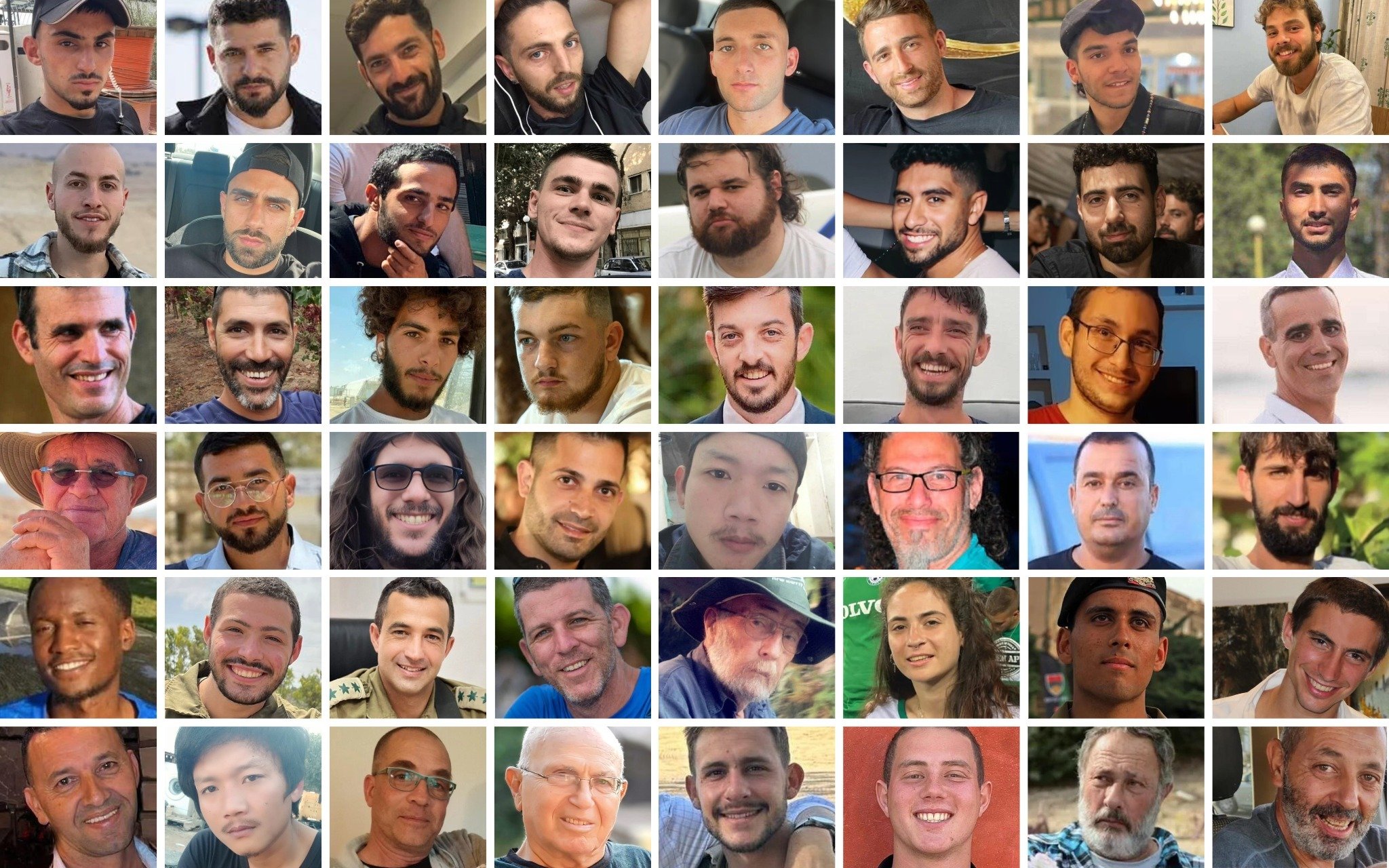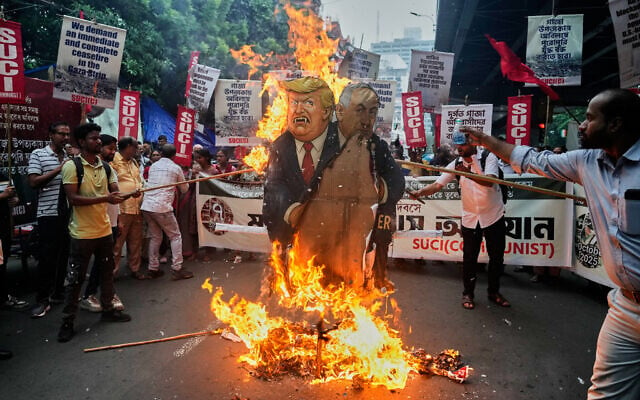


This Editor’s Note was sent out earlier Wednesday in ToI’s weekly update email to members of the Times of Israel Community. To receive these Editor’s Notes as they’re released, join the ToI Community here.
On October 7, 2023, Hamas, the Gaza terror government that Israel had unfathomably assessed was interested in maintaining long-term calm across the border, fired almost 5,000 rockets into Israel as its invading forces set about massacring everybody it could find in a monstrous onslaught ultimately intended to destroy our country.
On October 7, 2024, a year into Israel’s potent, ponderous and devastating response, Hamas’s much-reduced forces managed to launch 14 rockets.
On Tuesday, the second anniversary of its slaughter, Hamas fired a single rocket — at Netiv Ha’asara, a border moshav where its monsters had murdered 17 residents two years earlier. The rocket fell in the area of the moshav, but caused no injuries or damage.
The spectacular decline in Hamas’s offensive capabilities in Gaza, as emblemized by those rocket numbers, is not for the lack of trying. Hamas has been reduced from a 24-battalion army capable of inflicting the heaviest one-day losses upon its loathed Jewish people since the Holocaust, to a guerrilla force currently primarily focused on survival. But its ideology is unchanged: destroy Israel and kill Jews at any cost.
And it has galvanized ever-widening global backing for its cause from hate-filled antisemites of far-left and far-right and their useful idiot allies — recruitment eased by the extremist rhetoric and policy goals of the far-right parties in the Israeli government, and the decontextualized scale of the destruction in Gaza — throwing the Jewish disapora in many countries into an era of widespread hatred unseen for almost a century.
US President Donald Trump may have welcomed Hamas’s characteristically cunningly worded, ostensible acceptance of his 20-point plan for the release of all hostages and eventual end to the war in Gaza, as evidence that the Islamic extremist group is “ready for a lasting PEACE.”
But, in fact, as it made clear in a self-congratulatory statement issued on Tuesday’s anniversary, Hamas is, of course, ready for nothing of the kind. Rather, it gloated that its slaughter constituted “a glorious day” en route to the destruction of the Jewish state — or rather, as it stated with the shallowest euphemistic veneer, “a major turning point in the path of Palestinian resistance and in the regional balance of power.”
Neither, for that matter, are the two Trump-allied nations taking central roles in mediating the current indirect Israel-Hamas talks on the president’s plan, Qatar and Turkey, remotely interested in Hamas’s demise. Turkish President Recep Tayyip Erdogan repeatedly brands Israel the terrorist entity and lauds Hamas as its victim. Qatar relentlessly poisons minds worldwide courtesy of its Al Jazeera outlet. (Israel’s Channel 12 reported earlier this week that Qatar is carrying out a purge at Al Jazeera, apparently at the US’s behest. I’d say the jury’s still out on that.)
The US president has evidently decided he knows better than the prime minister about Israel’s essential needs. While Netanyahu has sought to frame the Trump proposal as a closely coordinated joint initiative, the president, announcing his plan alongside Netanyahu on September 29, declared that while Netanyahu is a redoubtable “warrior,” the Israeli people “want the hostages back… And they want to have peace… We had a long, strong talk, Bibi and I, and he understands it’s time. It’s time.”
He then reportedly told Netanyahu, after Hamas’s conditional acceptance of his proposal, “Bibi, this is your chance for victory,” and added, “He was fine with it. He’s got to be fine with it. He has no choice. With me, you’ve got to be fine.”
At this writing, however, there appears to be a danger that the negotiations in Sharm el Sheikh are bogging down.
The talks are intended, as far as Trump and Netanyahu are concerned, to quickly finalize the technical details of the “first phase” of the president’s plan — the rapid release of all 48 hostages, the freeing in exchange for 250 Palestinian life-sentence terrorists and 1,700 post-October 7 Gazan detainees, and a limited IDF withdrawal within Gaza. But they show signs of reverting to protracted argument over the familiar Hamas demand for a guaranteed end to the war and full IDF pullout as a condition for the release of hostages, with Hamas also resisting disarmament, and demanding the release of many of the most notorious mass-murdering terror chiefs whom Israel has repeatedly clarified it will not set free.
The question, now, therefore, is whether the president’s envoys Steve Witkoff and Jared Kushner can, this time, square that two-year circle and get Hamas to free all the hostages in the very near future — giving up its best leverage on the basis of Qatari and Turkish encouragement, Trump’s public promise “to do everything possible to make sure everybody adheres” to all elements of his 20-point deal, and possible additional undisclosed assurances.
Let nobody think this would spell the end of Hamas, active and widely supported in the West Bank, bent on eventual revival in Gaza, anticipating a major boost through the release of notorious terrorist murderers from all Palestinian factions, and still publicly reveling in the “glorious” barbarism of its October 7 invasion.
It would, however, mark the beginning of the end of Israel’s two-year nightmare, and the opportunity for Israel — so divided that Netanyahu’s pet TV Channel 14 could not even bring itself to screen Tuesday night’s national memorial ceremony organized by families of victims, hostages, and survivors of the Hamas horrors — to begin its vital internal rehabilitation.




